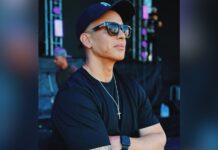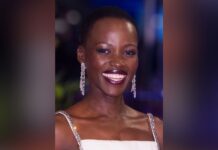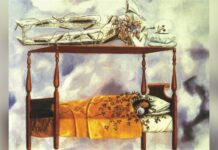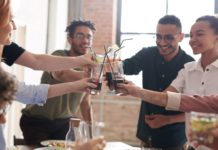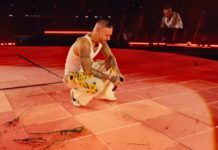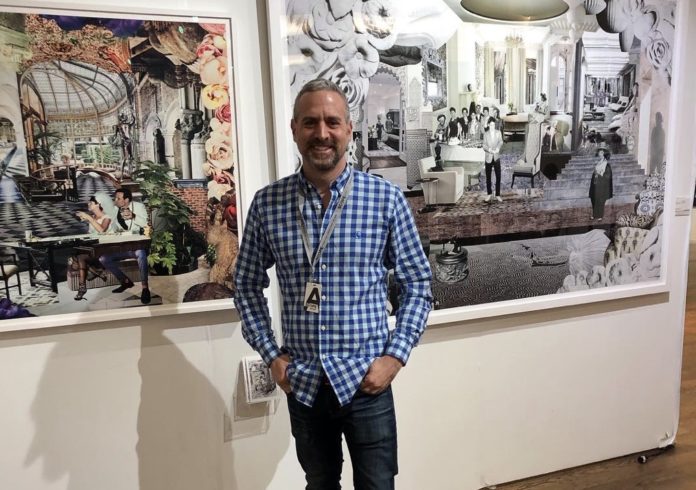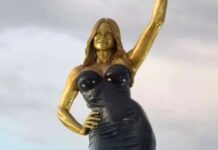When I met Steven Rudin in 1993, I was sure he was a native Spanish speaker. It was my second year in college, and I had devoted the first one to fulfilling distribution requirements (like science for non-majors and calculus, which I was ill-advised to take but too over-confident to settle for a class nicknamed “math for trees”), so that I found myself enrolled in my first Spanish literature seminar, one mostly populated by juniors and seniors. Another sophomore might have kept quiet more, but I did have that abundance of confidence, even more distinctly in a class conducted in my native tongue. Another non-native speaker might have kept more quiet than Steven did, but he also was not shy and we became fast friends.
Discussing literature and campus life, he was as impressed by my Midwestern accent as was I by his slight Madrileño. Having spent a year abroad in Spain the previous year had really fixed the language for him, but I had met a few American exchange students and none were as connected to the language and culture as Steven.
At the end of the year, after his graduation, Steven came to visit me back home in Bogotá, Colombia, where my parents and siblings still lived. My recollection of the experience was marred by Colombia’s defeat against Team USA in the 1994 World Cup appearance. It was especially painful that the loss happened by autogol (and I cannot really speak of heartbreak and shame we felt as Colombians when a player’s tactical error resulted in grotesque violence, even now, 25 years after those dark days).
For Steven, a native of Chicago, I imagine the whole trip was borderline insane: the vendors at every stoplight selling maní dulce and yellow-netted bags full of sweet, slippery mamoncillos; the guy I would tip for “watching my car” when we’d leave it parked on the street outside whatever bar had absorbed us; my parent’s fear and my fearlessness. But he speaks fondly of that trip as a cultural moment, which together with quite a few others during the course of his diverse career, nurture the collages he creates.
After the visit to Colombia, Steven attended medical school. Having read some very funny short fiction he’d written in college, I had seen his creativity, but was not expecting his turn as a visual artist who creates larger-than-life pieces that hang in galleries.
Drawing from the artist’s own philosophy, which he summarized for me during his first solo show in Miami last year, I can see how all the bits of his biography were always there and already shown, abutting and superimposed on one another, many corners calling out for attention at once, much like a collage. Less surprising than this former psychiatrist becoming a collage artist is his choice of medium. For Rudin, most things, from memory to beauty to language, perform according to the laws of collage.
There are so many diverse tiles that go into the mosaic of who you are and what you do. I would like to speak with you about the three that I find crucial to your work: medicine (psychiatry), art (collage), and language (Spanish). Please feel free to illustrate some of the other tiles that are also part of the picture, too.
Yes, so in medical school I learned to piece together thousands of pieces of data in a collage of associations, knowing full well that I would forget more than 90% of it. Amongst all of this memorization, at least during the first two years, there was not a lot of room to let my imagination wander. I felt a disconnection to my art process, even though my mind was expanding in other ways.
This all changed when I was first introduced to clinical psychiatry on the Spanish Speaking Unit at the Bronx State Psychiatric Center. In the mid-1990’s, treatment options were advancing rapidly and seeing the patients’ transformations was extremely exciting. I felt energized to produce a lot of art during my psychiatry rotations, which merged the two fields in a personal way. For me, psychiatry was the “artsiest” medical specialty, the most like literature.
I can imagine that completely. In literature, we use Freud’s theoretical framework to the talking cure and, especially after postmodernism, Lacan’s reworking and complication of Freud’s theories as techniques for interpreting any text.
Absolutely! The reverse of that was my psychiatry residency at Columbia University, which involved a lot of reading and writing about an array of topics from evolutionary biology to behavior theory and psychoanalysis. Fairly quickly, I came to think of the whole field of psychiatry as a collage of ideologies, methods, and practices that could be combined in multiple ways. I also remember adopting the philosophy that identity is like a mosaic, composed of parts that don’t seem like they should necessarily go together, woven together into a story.
This idea of mosaic narratives that are not necessarily linear came into play as I honed my expertise in treating PTSD. For instance, when I was called to be one of the founding members of a consortium formed in response to the September 11th attacks, I leaned toward techniques that involved visually restructuring recollections. My viewpoint as an artist helped me to imagine people’s inner lives and to remember their stories vividly. Helping patients reimagine their stories, or rather recall them and later superimpose other layers that would benefit them proved to be very effective.
At the same time, art was invading my spare time. Living in Manhattan in my mid-twenties was especially dynamic and very conducive to creating art. I found a lot of inspiration on the subway and in store windows, especially in Chelsea and the Village. I transformed my tiny apartment into an installation with items I found on the street. Dumpster diving was my thing back then. I would cover a lot of territory on my rollerblades. Over time, I saw a parallel between my clinical work and my increased focus on hand-cut paper collage.
Would you expand on this parallel? Did you translate listening to people’s trauma as a narrative into a visual text? In other words, are we meant to read your collages as a rendering of an identity, like someone’s consciousness visually represented?
In a manner of speaking, yes. After a traumatic event, our sense of reality can feel shattered. Reassembling the pieces into a narrative and integrating this narrative into our life story is the rationale underlying many PTSD therapies. I was trained in a cognitive behavioral therapy called Prolonged Exposure (PE). PE involves telling and retelling the story of a trauma until the parts fall into place in a way that is no longer terrifying. As a therapist, I acted as a facilitator, helping people to confront memories that they would naturally try everything possible to avoid. The process was very visual — people described in words what they saw in their memories. This gave me a window into the way that memories can be structured because I had to imagine what they were seeing. I witnessed how the visual memories became more organized with repetition. Having a more coherent, unified visual history was somehow curative.
How does this work? Isn’t it a bit like rewriting people’s memories? That seems kind of intrusive.
It’s not about changing the memory but changing the template we use to interpret that memory. As human beings, we have to learn to navigate nuanced situations, like talking to someone at a specific time of day or responding to particular stimuli in specific ways. We come up with these rules when we’re young, but as time goes one, our needs change. People get into patterns where they arrange data according to a particular template. In psychotherapy, we change it up. We need to have various templates so that we don’t end up recreating the template we learned and can’t break free from. We ask ourselves, how did that happen to you so many times? We are all committed to our own template and unless we change it, we will fail to change the outcome.
What do you think makes this kind of therapy particularly effective? Does its success rely on the visual pathways?
Let me start by saying that PE therapy is not for everyone. However, it showed me how much the visual and emotional systems are interrelated, and it got me interested in methods that target the visual system directly, such as imagery techniques. I believe that art can bypass language and logic, which can sometimes be sectioned off from the emotional brain. Behavior therapy, in general, does not rely on talking as much as other forms of therapy, but rather on reworking our relationship to something that we fear.
How does language fit into all this? We know that being fluently bilingual made you an ideal fit to assist patients in the Bronx and many more throughout your psychiatric career. Would you describe how?
Not surprisingly, I think of spoken language as a form of collage. Words can be put together in a variety of ways depending on the way we feel. Modifying the word order, for example, can yield multiple different meanings. This is a central principle in Cognitive Therapy. We can also mix languages (sometimes called “Language Switching), which happens a lot in therapy with bilingual patients.
All of this is related to my interest on the use of interpreters in the psychiatric interview. Being bilingual in a busy hospital, I overheard a lot of miscommunication, especially when the dialogue occurred through a translator. So, I took it on to develop a workshop on the do’s and don’ts of using interpreters in clinical settings, which I presented at a national conference. Nowadays, fortunately, many hospitals have better guidelines (such as not using family members to translate). But, at the time, there was relatively little written on the subject.
That said, I do believe that even when people communicate in a common native tongue, we don’t always come away with the same message. This, I guess, is the basis for active listening, which is critical for couple’s therapy. We tend to reconstruct what other people say in a predetermined pattern, which can have more to do with what we expect as opposed to what the other person meant.
We are in a constant state of processing and remodeling our experiences into a collage according to our own personal template. I put mine together in one way and you, perhaps, in another. Through my collages, I want to show that we can arrange the pieces in new ways that we might have never imagined. And, we should try this if we want to grow and break out of entrenched ways of understanding the world.
Presumably, using visualization, once the initial language hurdle is negotiated, would also be a way to avoid miscommunication and enter into that universal common language, too, right?
Absolutely!
So, when did you decide to work full time on your art? Do you think you’d go back to psychiatry?
About five years ago, I decided to carve out more time for art. At that time, I was learning a new theory of personality as a collection of parts. Collage as a metaphor for memory and identity developed organically as I became more aware of my motivations. Representing the totality of my life’s experience, this body of work was well received in a way that told me it was time to dedicate myself to a full-time studio practice.
It sounds as if you are able to communicate some of this therapeutic work through the art itself, which is wonderful. Is there something about your clinical work that you miss?
I do miss seeing patients directly. And I would consider going back into clinical practice, if that was where my path was leading. That said, while working as a psychiatrist, I was constantly trying to imagine new ways to share ideas about emotional resilience that did not rely exclusively on one-on-one talking. I am interested in modalities that could be implemented in a group, even at a population level. We are at a point where we, as mental health professionals, know a lot about the mind. And, we have a lot of tools. People are receptive to experiential learning about psychology, even outside of a traditional therapy setting.
In a manner of speaking, collage is how you open up your work to a wider audience?
Exactly. Right now, I am interested in reaching out to the world through visual art. To me, art is a form of communication that engages people to think or feel something. Fortunately, most people seem to grasp the psychology of collage easily. For example, I recently led a Fundamentals of Memory Collage Workshop where participants brought in their own photos and images. I felt exhilarated because I could see that they were really internalizing the idea that memories are dynamic and designed to teach us something that should propel us forward. Many told me that they will never see the world quite the same way again.
What do you think is so effective and powerful about art that is perhaps missing from the traditional psychiatric model?
Art is important because it doesn’t rely on a one-on-one encounter or on language alone. I am interested in the avenues through which I can share these ideas with people to be applied even in a first-aid way. What I am showing with collage is that we can arrange them many different ways to tell many different stories.
The way we fix memories in our mind is initially visual and emotional, not verbal. We have a repertoire of visual images but only call up the ones we are used to and configure them into a collage that is like a visual fingerprint. In therapy, I helped people rearrange the visuals of their memory until it changed, until the story still contained the facts of what happened but the feelings around it lighten and are better assimilated. PE therapy was collaborative collage: we were confronting the memory of the trauma until the pieces fall into place in a different way and the trauma—the scattering of the pieces— is processed and unified. With the image of trauma reconfigured, now the patient does not feel fragmented, visited by bits of the trauma. We consolidated it—there were pieces in the bedroom, the hallway, on tv, but we unified them all so that it’s one trauma story, which can now be archived, filed away, and people can move on.
But back to why art, and it’s this: Art is a way of undermining the defenses because it’s non-threatening. I can reach so many more people through an exhibition than in my office.
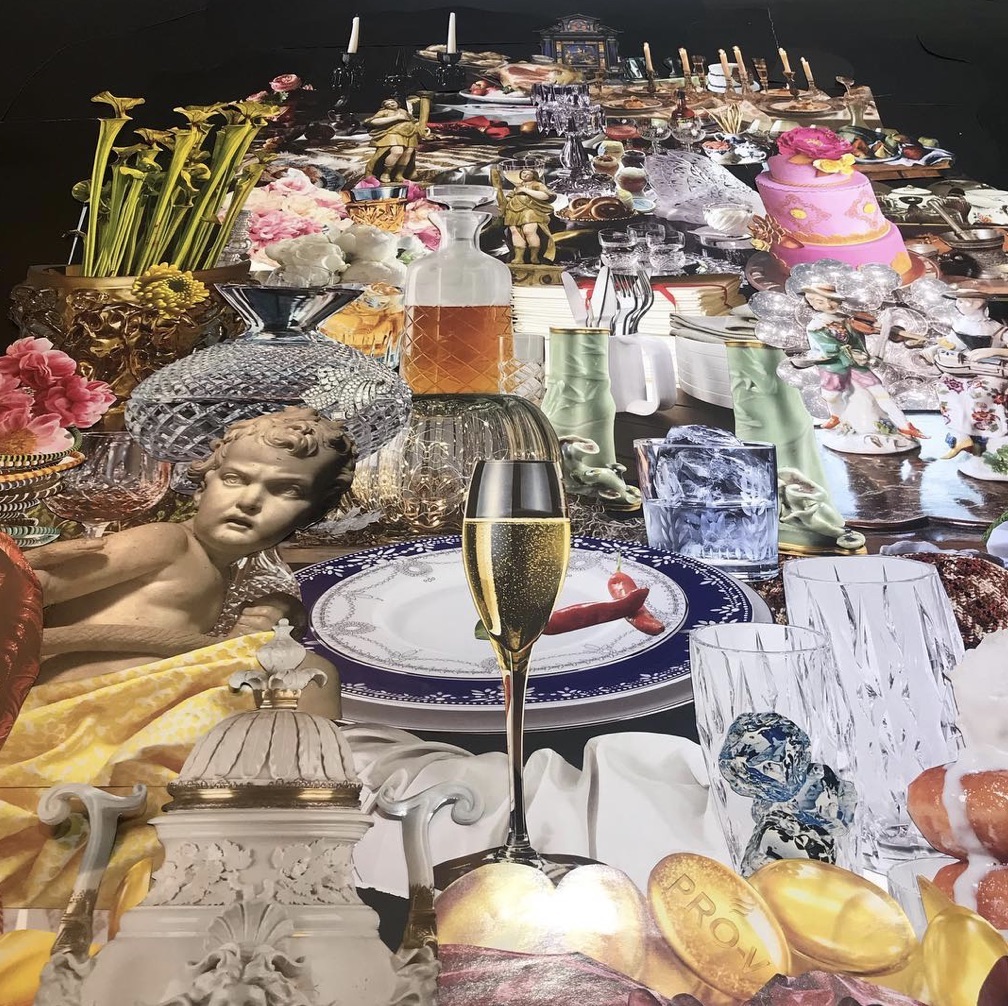
This all sounds like wonderful but rather messy work. Why are your collages so beautiful, then?
Beauty is really healing. People melt in the face of beauty. I try to fill the pieces with opportunities for discovery, get their attention. If I can’t do that, then there’s no communication. I want people to stop and take notice because it’s a whole story with so many pieces. By the time I’ve put the collage out into the world, I have looked at all the different pieces for days, making very few, very slight adjustments, like Iyengar Yoga, in which subtle movements fine-tune the pose — it’s very meditative.
I’m interested in why collage, though. Couldn’t you achieve the same effect through a giant painting? I’m thinking of Hieronymous Bosch’s ‘Garden of Earthly Delights’, for example, a beautiful giant triptych with some rather strange and disturbing bits if you look up close.
I could draw or paint, but I don’t have patience for that in the same way. Collage is very active—cutting, pasting, measuring, filing. I use painting and drawing to inform what I do, but given the way my mind works, these art forms are not my focus..
I like that every composition is a puzzle. It takes me weeks and months to get it right, sometimes I can’t figure it out, other times I don’t have the pieces, so I have to use what I’ve got. Which is a good analogy for life. [laughs]
The most daunting is glueing them down because there are so many pieces and they need to be done in the right order, because it’s layered, and there are only millimeters to spare. Sometimes I make mistakes, and the whole thing changes, which is also ok, but the work is to set up the puzzle, then take it apart, then I put it back together and fix it. Which is why the work requires so much concentration. But when I mess up, I understand that it’s all connected in a sequence and if there hadn’t been a mistake it wouldn’t have been so beautiful.
Also like life [laughs]. If you don’t mind, I’d like to get personal. Can you tell me a bit about your own collage? I know that travel has been a key for you and that the Spanish language, particularly in Spain, has been a big part of that. I know you’re recently back from Spain, where you obtained citizenship on the basis of being descended from Spanish Jews. Is this a tiny piece in the corner of your collage? Or would you place Spain front-and-center?
For me, identity is a mosaic, much like memory. It’s multi-dimensional. Human beings are made up of parts and one doesn’t necessarily eradicate another. As an American Jew, with a Sephardic mom and Ashkenazi dad, I always realized I was made up of different parts. My mom’s family never used Yiddish, but most of the Jewish people I knew did. It made me feel different, made up of some of the same parts and many different ones. Also, being American, I enjoyed both humanities and science, I went to theater camp, but also played sports. I’m gay, which is also just one part of me, like the others.
I was prepared to see all these little differences as random, but when I went to Spain at 19, I was shocked to find that some of the parts that made me different were from there, they weren’t just conjured or accidental. Some of my pieces were Mediterranean. I saw my grandfather everywhere: the way he smoked his cigarettes; these words he used, like “ya savvies”, which I now see is Ladino for “ya sabes”; the way he combed his hair back; how in my family we drank from tall, skinny glasses. And I looked like them! People thought I was Spanish. In Spain, I didn’t feel overly dramatic, or that I laughed too much or talked too much. I fit in.
On that first trip, we visited 30 cities, all the museums, led by professors. The students were super committed and we learned so much about art and architecture, learning terms in Spanish that I never even knew in English, cosas como “el córnice de la cúpula”, [laughs] and this is where my artistic sensibilities were strengthened. My style could be described as synthetic cubism—building images from blocks, like Gaudí, who makes things out of parts.
The imprint of that trip to Spain was so powerful and it happened at such an impressionable time that it laid the groundwork for everything that I’m doing now. I unconsciously picked up the triptych framework from Gaudí, which absolutely informs my style. And wandering through El Prado this time I saw the bits I had collected: Zubarán, Murillo, the contrivance of Velázquez’s perspective in Las Meninas. Their paintings are so ornate, like eye candy. It’s from them that I get my sense of composition and perspective. I didn’t understand it until now; it took me 25 years. I feel kinship to Vermeer, Reubens, and Brueghel, the Sephardic Jews who went to the Netherlands, like the philosopher Spinoza.
What do you think has enabled you to hold onto these pieces, to the Spanish language and your artistic influences?
Well, ultimately I am a collector. I have been going through life picking up parts: of art, of information, of aches and pains, of worries, even kidney stones! I hold on so tight that I can’t even let those go [laughs].
Right there with you, bro. I held on so tightly to my babies they had to cut them out of me. [both laugh] Where do you see yourself in another 5 years. Still making collage?
Always! Life is a collage, like memory, identity. Even this interview is a collaborative collage; I can’t wait to see the finished product. Aquí estamos, sembrando semillas…
Thanks for collaging with me. Now I have to do the treacherous part of glueing. Wish me luck!
Good luck!
For more about Steven’s art and his current shows, find him on his website http://www.stevenrudin.com/ or on IG @stevenrudinart.
For Image credit or remove please email for immediate removal - info@belatina.com






